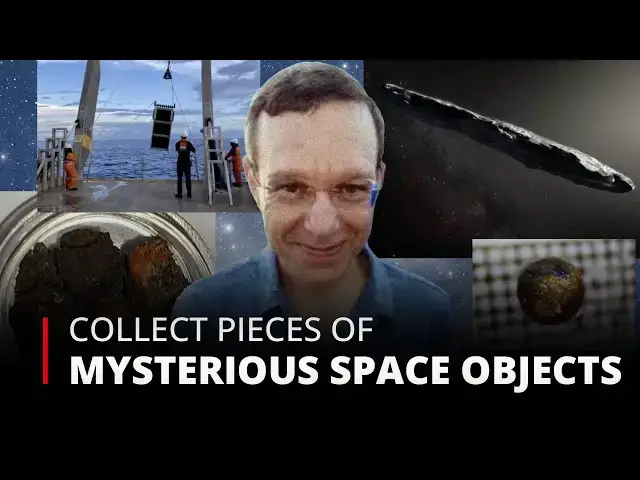0:00
ail lb a Harvard astronomer has made an
0:03
exciting Discovery he and his team known
0:06
as the galileia project have looked
0:08
closely at fragments from a meteorite
0:11
that fell into the Pacific Ocean in 2014
0:15
this meteorite named im1 is believed to
0:18
have come from beyond our solar system
0:21
lb is known for suggesting that om mua
0:25
another space object that passed by
0:27
Earth in 2017 could be from Aliens he
0:31
mixes unusual ideas about space with
0:34
serious science this time he wanted to
0:37
learn more about the meteorite to find
0:40
out if it could be linked to intelligent
0:43
beings from outside our solar system the
0:46
galileia project went on an expedition
0:49
near Papa nug this summer they gathered
0:52
over 700 small pieces from im1 they
0:55
carefully studied 57 of these pieces L
0:58
shares that there study showed five of
1:02
these tiny pieces were formed when im1
1:05
surface melted due to the intense heat
1:07
from the air friction which it entered
1:10
Earth's atmosphere in
1:12
2014 interestingly these five pieces had
1:16
elements in them that are not usually
1:19
found in our solar system this is a
1:21
significant discovery that could change
1:23
how we understand space history L's team
1:27
used a special tool they created called
1:29
the the interstellar hook to retrieve
1:32
these pieces from the ocean floor this
1:34
device has magnets that collect meteor
1:37
with high amounts of iron and other
1:39
materials typical of space objects that
1:42
come from outside our solar system in
1:45
2022 the US space command confirmed that
1:48
im1 did indeed come from outside our
1:52
solar system this happened after years
1:55
of FL theories however it is not yet
1:58
clear if the fragment they collected
2:00
show any signs of being made by aliens
2:04
ly's dream is to find a piece of
2:07
equipment that was made outside of Earth
2:10
and still works this could be a clear
2:13
sign of intelligent life beyond our


